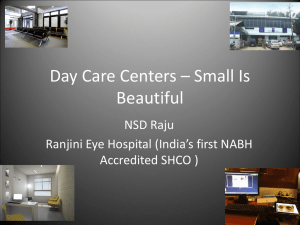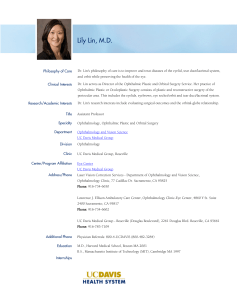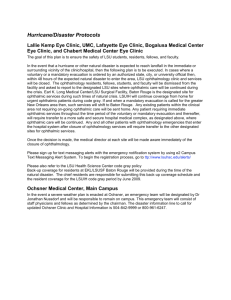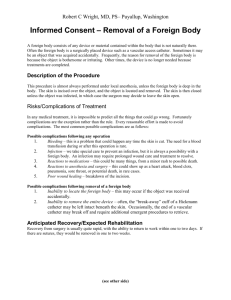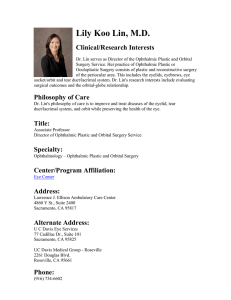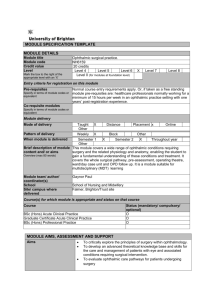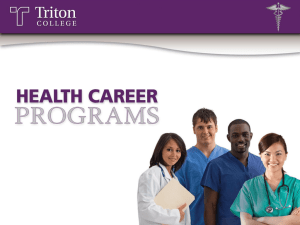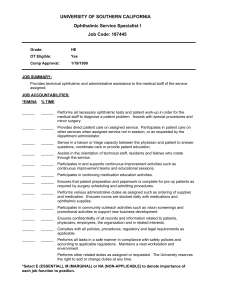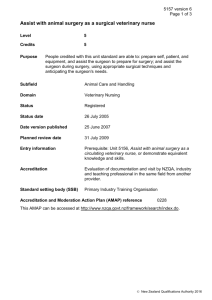Evolution of teaching in Ophthalmology
advertisement
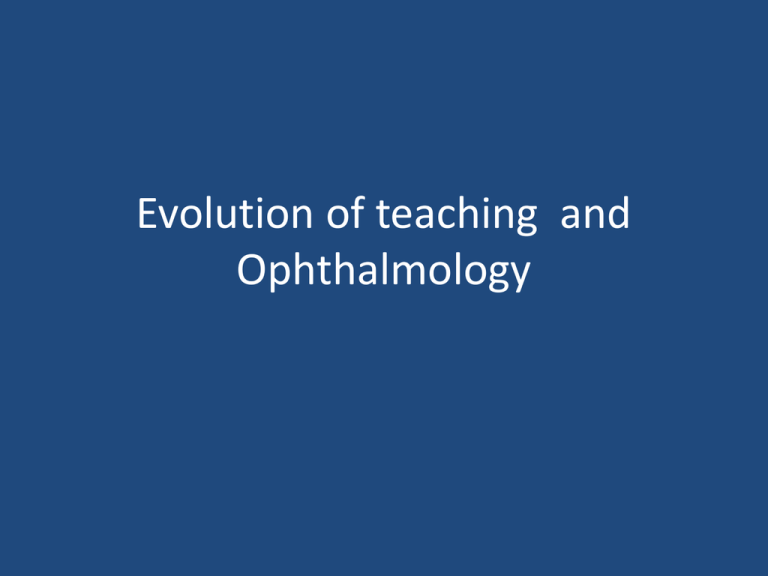
Evolution of teaching and Ophthalmology 3000 BC - writing • Teaching of scribes • Philosophers • Astronomers • Law • Religion • Art Teaching system mainly by mentors Military Systems Rennaiscence Industrial revolution Birth of trades and professions • Learning by demonstration , explanation , mentoring , group learning, questioning and testing. 19th Century – Compulsory learning • Poor capable of education • Prussian system – authority _ rigid curricula _ rote learning for exams _detailed theory Skill acquisition still depended on apprentice system 20th Century improvements • • • • • Expert teachers Enhanced knowledge base Updated textbooks Case method Experiential method –deriving meaning and understanding from experience • Learning by teaching 21st Century • Information Technology data bases search engines google , wikipedia web sites portable computers i-phones , i-pads Ophthalmic technology and learning • Imaging of the eye - colour , FFA • OCT , Corneal topography , HRT • Video recording of surgery Personal graphic records Collaborative learning audit of surgical technique and outcome wet lab practice Simulation systems for virtual surgery Quality of Ophthalmic learning Teachers generosity of spirit time commitment well trained themselves personal training in best teaching practice Trainees Committed , passionate self-motivated insight Importance of skill acquisition Good mentors are essential The Modern Ophthalmologist • Selected in open competition • Full knowledge acquisition on-line • Systematic skills acquisition and upgrading • Annual auditing and recertification • Strong ethical framework Ophthalmic training programmes should equal those for astronauts • Strict , regular recertification • Certification for any new proceedure • Skills maintainence with compulsory regular simulation or formal surgical assessment • Regular presentation of all outcomes (audit) 12 Requisites for an oculist and surgeon 1. 2. 3. 4. To be descended from religious parents To be religious himself To have studied latin, anatomy and medicine To have studied surgery from youth (those entering ophthalmology from the plough, manure wagon, or late in life are unsuitable) 5. To have served an apprenticeship with an accomplished oculist and surgeon 6. To have healthy young eyes 7. To have fine, settled, healthy hands and fingers and to be nimble with both hands 12 Requisites for an oculist and surgeon 8 To be able to draw 9 To be married 10 Not to be greedy for money or haughty 11 Not to be a drunkard 12 Not to be presumptuous or vainglorious As an afterthought, he added “Very few such oculists exist” George Batisch, Dresden, 1583
